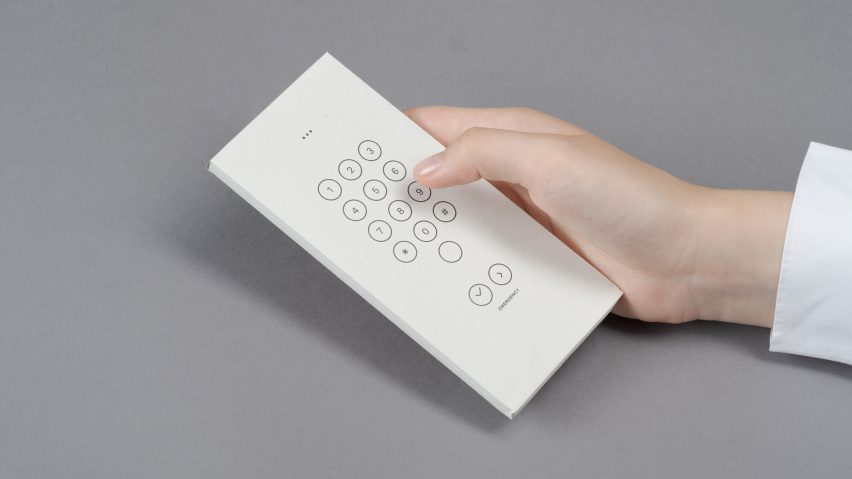London design studio Special Projects has created a series of paper envelopes that seal away smartphones and minimise screen time for the day, while still allowing access to basic functionality.
Users can download and print two different envelopes – one featuring a dial pad to make and receive calls and the other a simplified camera with no viewfinder, just buttons to capture photos and videos.
These work in coordination with an app, which takes over the entire screen and blocks all other functions or applications while it is being used.
"It's been a really interesting exercise taking a device with so many functions, masking it to remove all of them, and then slowly adding them back in," said Special Projects co-founder Adrian Westaway.
"With the camera, we wanted to present the most extreme and clear version of the concept so we got rid of the screen altogether."
This creates a user experience similar to that of an analog 35 millimetre camera, complete with the anticipation to see how your photos turned out at the end of the day.
The project was inspired by stories of people going to extreme measures – physically locking away their smartphones or buying old school Nokias – in an attempt cut down their screen time.
Rather than expecting people to abstain completely, Envelope eases the process by allowing users to access only the functionality they actually need via a calm, minimalist design.
Paper maintains the touchscreen functionality, and is fragile enough for the envelope to be effectively destroyed when it is unsealed.
Special Projects hopes that this creates a greater incentive to last as long as possible without opening it.
"We really wanted to create something physical when we started working on these experiments, but we wanted it to be as accessible as possible, ideally completely downloadable," Westaway told Dezeen.
"It turned out that paper was the best material for this as it is pretty much ubiquitous and people can easily print it at home or at work."
Although the envelope currently only fits the Google Pixel phone, the project is completely open source and could be adapted to suit any device.
The team has also considered the environmental impact of the project, claiming that printing out one page per day for a whole year would produce approximately 10 grams of CO2.
For comparison, Special Projects calculated that using a mobile phone produces 1.25 tonnes of CO2 a year per person, once the energy requirements for account networks and server infrastructure are taken into account.
Envelope is the second design developed by Special Projects as part of the Google Digital Wellbeing Experiments.
It follows last year's release of the Paper Phone – a daily, printable booklet that holds all your essential information for the day.
A recent exhibition at London's Somerset House invited artists to explore how technology such as smartphones has created a stressful 24/7 lifestyle.

